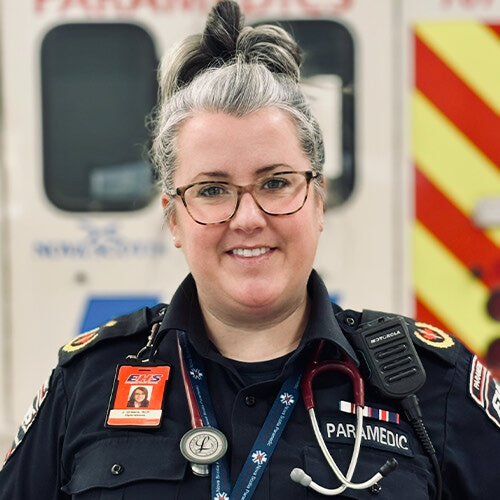 |
|
Paramedic Sepsis Identification and Impact on Time to Antibiotic Treatment: A Retrospective Chart review. Greene J., Goldstein J., Lane D., Leroux., Kephart G Introduction: Sepsis syndrome is associated with high mortality. Early recognition coupled with prompt delivery of antibiotics can increase survivability. Our objectives were to describe the impact of paramedic sepsis recognition on time to antibiotic administration and to determine the accuracy of paramedic sepsis recognition compared to Emergency Department (ED) physician diagnosis. Methods: We conducted a retrospective chart review of patients with transported by paramedics to the Queen Elizabeth II ED between Jan 1st, 2019 and Dec 31st, 2019 who were diagnosed in the ED or by paramedics with sepsis. The primary outcome was time to antibiotic. Critical time intervals between these groups were compared. We calculated the sensitivity and positive predictive value of the paramedic recognition. Results: A total of 214 cases were identified, 49% (n=104) were female and had a mean age of 70 years (SD: 15 years). The mean overall time from triage to antibiotic treatment was 3 hrs 2 min (SD: 2hr 27 min, IQR 2 hr 16 min) with 11.2% receiving the antibiotics within 1-hour of ED triage. When paramedics had suspected sepsis there was a 48-minute reduction in mean time to antibiotic (mean 2hr 14 min, SD 2 hr 4 min, IQR 1 hr 31 min). Moreover, 31.6% of the EMS suspected group received antibiotics in the 1-hour recommendation compared to 6.33% in the non-suspected by EMS group. The mean time from first vitals to antibiotic was 3 hr 45 min (SD 2 hr 29 min, IQR 2HR 30 min). 126 (59.1%) cases were suspected sepsis by paramedics and 105 (49.3%) were diagnosed by the ED, and 6 (2.8%) were missing the ED diagnosis. The sensitivity and positive predictive value for paramedic suspicion are 18.1% and 15.7% respectively. Conclusion: Paramedics have poor ability to recognize sepsis in the field. However, their recognition may play a role in timely treatment. |
Jen Greene has worked in EMS research since 2011 and in paramedicine since 2007. She serves as the Dalhousie University Division of EMS Knowledge Translation Specialist, where it is her mission to get the evidence straight and get the evidence used.


